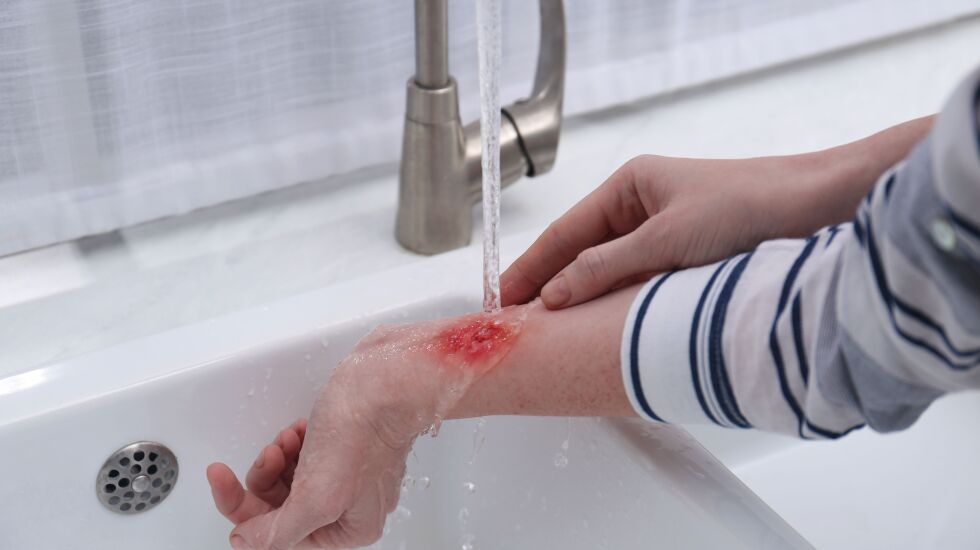
Summer means more barbecues, fireworks and late-night bonfires. Which also means a lot more burns.
The first thing you should do if you get burned is get away from the heat source, according to Dr. Jeanne Lee, who heads the Burn Center at University of California San Diego Health.
Then, make sure your burn is clean. Remove any residue. Apply a damp towel or cloth over the burn to provide some pain relief.
Dunking the burn into freezing water might be the first impulse, but don’t do it.
“The ice water will actually make the vessels constrict and reduce blood flow to the area, which might actually make the burn worse,” Lee says. “Because the way burns heal is that you get blood flow to the area to allow things to grow back.”
You might not need to see a doctor, Lee says. It depends on the severity. But she advises people to consult a medical professional if you’re at all concerned about the burn.
Doctors have tried to shift away from describing burns in terms of degrees, Lee says, but that’s still how people generally describe them.
First-degree burns are superficial burns, often caused by prolonged exposure to the sun, a fire or exposure to hot water. These cause redness and can be relieved with a pain reliever like ibuprofen.
“You just want something over-the-counter that you can take, and you just want to stay out of the sun or away from the heat source,” Lee says.
Burns that cause blisters or a loss of skin are considered second-degree burns. If the burn area is smaller than the size of your palm, you might be able to treat the burn at home without going to the doctor.
If you suffered a third-degree burn, you will likely need an operation.
“What happens with third-degree burns is that you’ve actually destroyed the nerve endings or damaged them in some way that you don’t actually feel pain,” Lee says. “So we’ll have patients who come in and say, ‘But, doc, it doesn’t hurt at all.’ Well, that’s actually a bad sign. It means it’s probably deeper than you think it is.”
Third-degree burns are often paler than other burns, “more white than pink,” says Lee, who advises anyone who suffered a bad burn to see a doctor.
With a second-degree burn that’s smaller than the palm of your hand, you can treat it at home, Lee says. Clean the area, and apply a layer of antibiotic ointment like Neosporin to prevent infection and provide lubrication before covering the burn with non-adhesive dressing. Use medical grade tape you can buy at a drugstore to hold it in place, and repeat daily. It can take one to two weeks to heal.
Lee advises against trying home remedies.
“I’ve seen people come in with mustard, toothpaste,” she says. “I think we had peanut butter once. Really, if it’s not a medication, you probably should avoid putting it on a fresh burn.
“And, in general, I tell people, if you ever have questions and are not sure, it’s always appropriate to go ask a professional. No matter what degree of burn you think you may or may not have.”
And what about blisters from burns? Should they ever be popped?
Though, in some cases involving minor burns, Lee says that can be OK, others, including the Mayo Clinic and the American Burn Association, say to leave blisters intact.
“Fluid-filled blisters protect against infection,” the Mayo Clinic says on its burn-care website. “If a blister breaks, clean the area with water mild soap is optional). Apply an antibiotic ointment.”
Read more at usatoday.com







